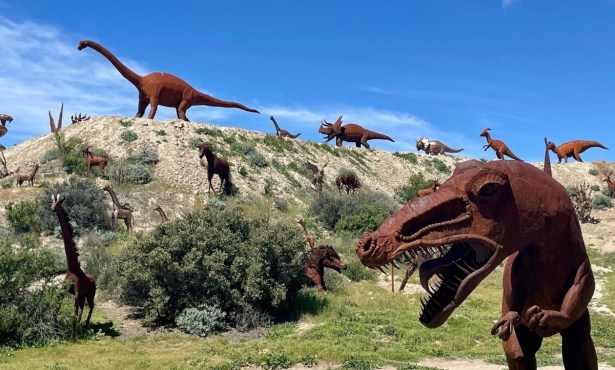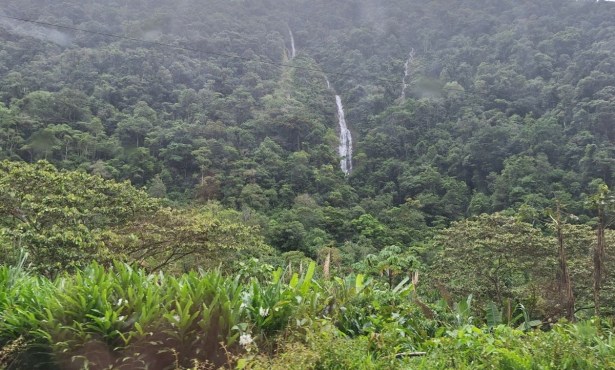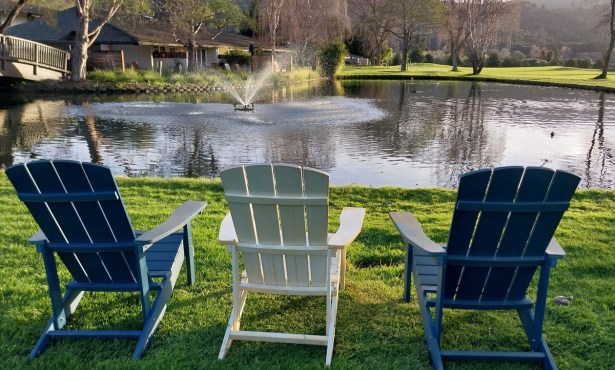Into the Wild Blue Yonder
Sea Landing Whale Watching Trips Offer a Calm Thrill
“Why are we just staying here?”
This question, asked by a six-year-old aboard the Condor Express, perfectly sums up the whale watching experience – in a good way. Riding a boat into the middle of the ocean in hopes of catching a glimpse of gigantic marine mammals that rarely raise more than the very top of their heads above water requires one to be patient and have no expectations. Nature, after all, isn’t there to perform for us humans.
That said, Sea Landing in the Santa Barbara Harbor makes it a bit easier to let go of one’s expectations by offering a free trip to anyone who doesn’t see whales the first time out. Plus, one’s chances of viewing marine life are much higher in the Channel Islands – home to more than 30 different species of whales, dolphins, seals, and sea lions – than in other areas. (I remember all too well being that bored six-year-old on whale watches in the Boston area, which frequently end in disappointment.) And this summer, the chances of getting your money’s worth are particularly high, given the return of numerous blue whale pods to the Santa Barbara Channel, which have returned after more than a decade.
I boarded the Condor Express, a 75-foot high-speed Catamaran, last Thursday, determined to take my chances. We sighted our first pair of blue whales of the day within 30 minutes of the ride, well before I was bored of the simple pleasure of sitting on the hull of the boat, enjoying the refreshing salt air, and the mildly nauseating fun of bouncing across the water at 28 knots – a speed which brings passengers to the Channel Islands in just 45 minutes.
“You’ve just joined a very elite group,” the captain said as we neared the pair, referring to the less than one percent of the world’s population that has ever seen a blue whale. This is due to the fact that the majority of blue whales spend their lives far offshore, and that whaling has greatly diminished the population of the largest creature on earth. According to the captain, pre-whaling numbers put the blue whale population at 300,000, a number which is now closer to 10,000.
We made our way over to the whales just in time to see water shoot from their enormous backs before they went under for their “deeper dive,” which the captain explained typically lasts for about 8-10 minutes. The boat idled while we waited, evoking questions from passengers like, “Why are we just staying here?” and, “Are they really gonna be down for 10 minutes?” much to the captain’s amusement.
“They’re on sort of a different schedule,” he explained. “They’re not here to watch whale watchers; they’re here to feed.” Given that blue whales consume 8,000 pounds of krill a day, feeding is a highly time-consuming activity. While we waited, the whales were at least 400 feet underwater, filling their mouths with millions of krill.
“It’s frustrating to only be able to see their backs,” my friend said as we gazed upon our ninth whale of the day. Still, one could get a definite sense of how huge they were – with a heart the size of a VW beetle and a tongue that outweighs the largest land mammal, the African bull elephant – by the giant glassy areas of the ocean’s surface that the whales left in the water every time they dove under, due in large part to the enormous amounts of water their bodies displaced on the way down. We also had the good fortunate of seeing three different whale flukes – about 25 feet wide – as the enormous creatures went under for their deeper dives.
One of the most exciting parts of the day was when a whale about a mile away came heading straight for the boat, spraying water the whole time. “He heard the noise of the boat and wanted to come over,” the captain explained. “They get used to the boat.” Apparently, the Condor crew also gets to know the whales, as the captain recognized this particular whale as soon as it got within a few feet of our vessel. “I know this guy,” the captain said, as if speaking of an old friend.
Next, we arrived at the west end of Santa Cruz Island, where we released a three-year-old sea lion that had been rescued and rehabilitated by the Channel Islands National Marine Sanctuary, one of the many research organizations with which the Condor Express is affiliated. Simply riding alongside the enormous cliff walls of the island’s west side was exhilarating, but then the captain took a detour to Painted Cave, the longest navigable sea cave in the world, named after its mineral-colored walls. We only made it to the mouth of the cave because of the substantial sea surge. “We normally make it in much farther,” the captain said, “but we like to get the boat back in one piece.”
We were rewarded for not testing Mother Nature on our return trip, during which we came upon a school of about 500 common dolphins. Having been dolphin obsessed since I was a young girl, I’ve swum with wild bottlenose dolphins – the type most people think of as “common” – both on organized trips and whenever I see them close to shore here in Santa Barbara. But this was a truly mind-blowing experience. Our boat was surrounded on all sides by mothers and babies leaping high out of the water, bow-riding, and tail-slapping, all within a few feet of us. For several minutes, the boat’s passengers fell silent as we admired the elaborate black-and-white patterns on the relatively small dolphins, who were clearly putting on a show for us ocean visitors.
During downtime, passengers ordered food from the dining car, which offers a full bar, made-to-order sandwiches and burgers, and of course, a copious array of candy bars, soda, and chips. Although better than most tourist fare, I was still jealous of the people who’d had the forethought to bring their own lunch – and sunscreen. For the first time in my life, I had direct proof that you actually can get sunburned through the clouds – just a little reminder that nature is indeed completely indifferent to our fate, no matter how many whales and dolphins we get to see along the way.
4•1•1
Sea Landing offers half-day whale watch tours (10 a.m-2:30 p.m.) for $88/adults, $45/kids ages 5-12; free for kids under five. Visit sealanding.net or call 963-3565 for schedules and reservations.



